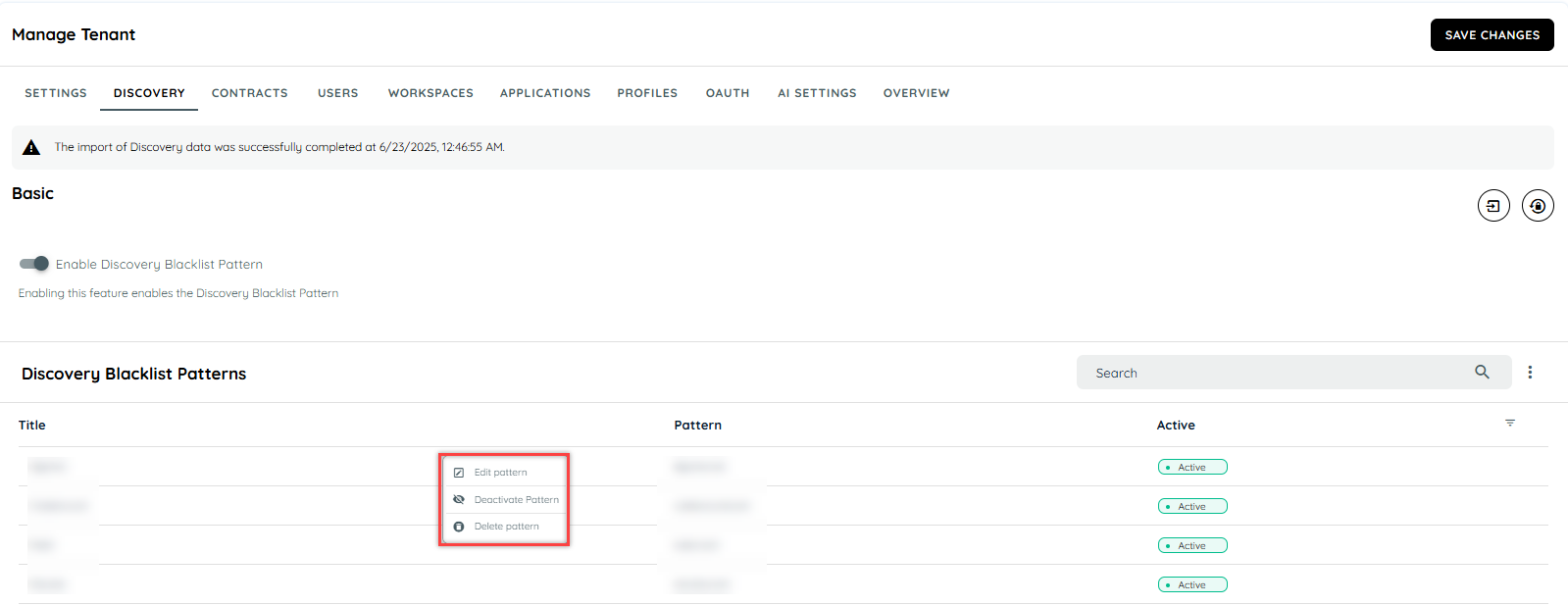Blacklist Management
The management of blacklist updates is handled within manage tenant, where users have the capability to update the blacklist globally at the tenant level. Any new or modified patterns are promptly incorporated into the blacklist, ensuring its efficacy and relevance.
Certain predefined rules are applied to this procedure, which are delineated as follows.
- Duplication of patterns is prohibited, ensuring that users cannot create duplicate patterns either locally or globally.
- Any patterns that have been globally deleted or disabled, and remain unaltered at the tenant level, will not be included in the updated blacklist for the respective tenant.
- In the event that globally deleted or disabled patterns have been modified or interacted with at the tenant level, they will be integrated into the updated blacklist for the specified tenant.
- Applications listed in the blacklist will not be identified as discovered apps at the client-side. Moreover, once an application has been discovered and subsequently added to the blacklist, it will cease to exhibit any activity on the client side.
Below are the functionalities available to users at the tenant level:
- Pattern Creation: Users can generate new patterns.
- Pattern Editing: Users have the ability to modify existing patterns.
- Pattern Deactivation/Activation: Users can deactivate or activate patterns according to their preference.
- Pattern Deletion: Users are permitted to delete patterns at the tenant level; however, it's important to note that if the blacklist is updated, deleted patterns will reappear.


Updated 3 months ago